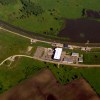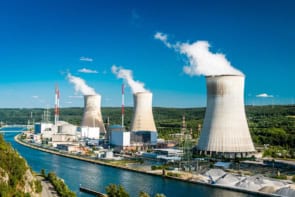Physicists analyzing data taken by the HyperCP experiment at Fermilab in the US claim it may have glimpsed the first Higgs boson -- the particle many think is responsible for all mass in the universe. However, for their claim to be correct our current 30-year-old Standard Model of particle physics would have to be set aside in favour of an alternative "supersymmetric" model (Phys. Rev. Lett. 98 081802).

The great triumph of the Standard Model is that it unites two of the fundamental forces – the weak and electromagnetic force – into a single, symmetric “electroweak” force at high energies. But at low energies, a symmetric electroweak theory would imply that particles have no mass, which is clearly wrong.
This is where the Higgs boson comes in – a particle that can break the electroweak symmetry at low energies. If our current Standard Model is correct, the much-sought Higgs would have a mass somewhere in the 100 GeV to 1 TeV region, which should allow physicists to discover it at the 14 TeV Large Hadron Collider at CERN once it starts up in November.
However, theoretical physicists analyzing data taken by the HyperCP experiment at Fermilab in January last year say the US lab might have got there first – that is, if we are prepared to consider an “extension” to the Standard Model. That experiment, which involved firing a proton beam at a fixed target, appeared to show three “events” in which a sigma-plus particle decays into a proton and a muon-antimuon pair. Although just three events would not normally be regarded as significant, German Valencia from Iowa State University in the US and colleagues — who are not part of the HyperCP experiment — suggest that the events could be interpreted as evidence for a new particle with mass 214.3 MeV, which they have dubbed the “HyperCP particle”.
Because it is relatively light and has a low interaction probability, the HyperCP particle does not fit into the current Standard Model. However, it could be explained using the “next-to-minimal supersymmetric standard model” (NMSSM). This model is one of several “supersymmetric” models that attempt to explain why the fundamental forces have such different strengths by proposing twice or more the number of particles. In the NMSSM there are seven Higgs bosons – Valencia’s team thinks the HyperCP particle may be the lightest of these.
Although much more evidence than the three events at HyperCP will be needed to lure physicists towards the NMSSM, Valencia is excited by the thought of physics beyond the current Standard Model. “The probability of this being a fluctuation is about half a percent, about the same as the probability of getting a string of eight heads in a row when flipping a coin,” he told Physics Web.
This is not the first time physicists have laid claim to a Higgs as part of an alternative supersymmetric theory. Earlier this year, John Conway and Tommaso Dorigo suggested that a 160-GeV “bump” in Fermilab data could have been one of five Higgs bosons in the more favoured “minimal supersymmetric standard model” (MSSM).



